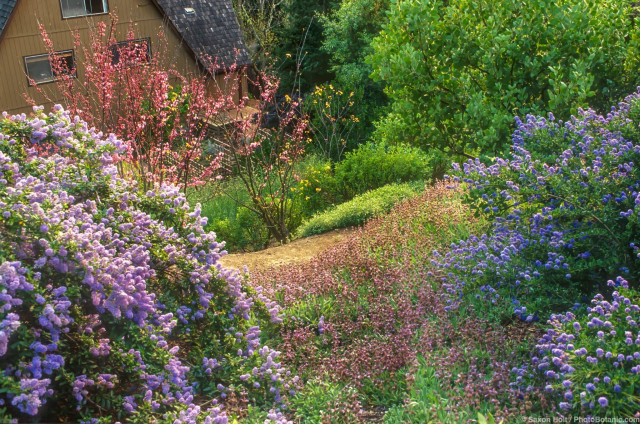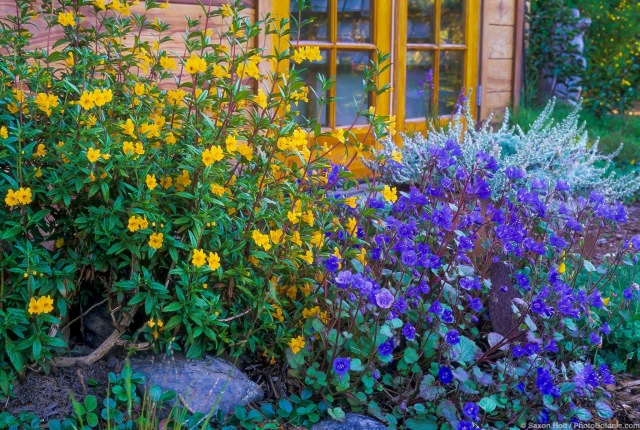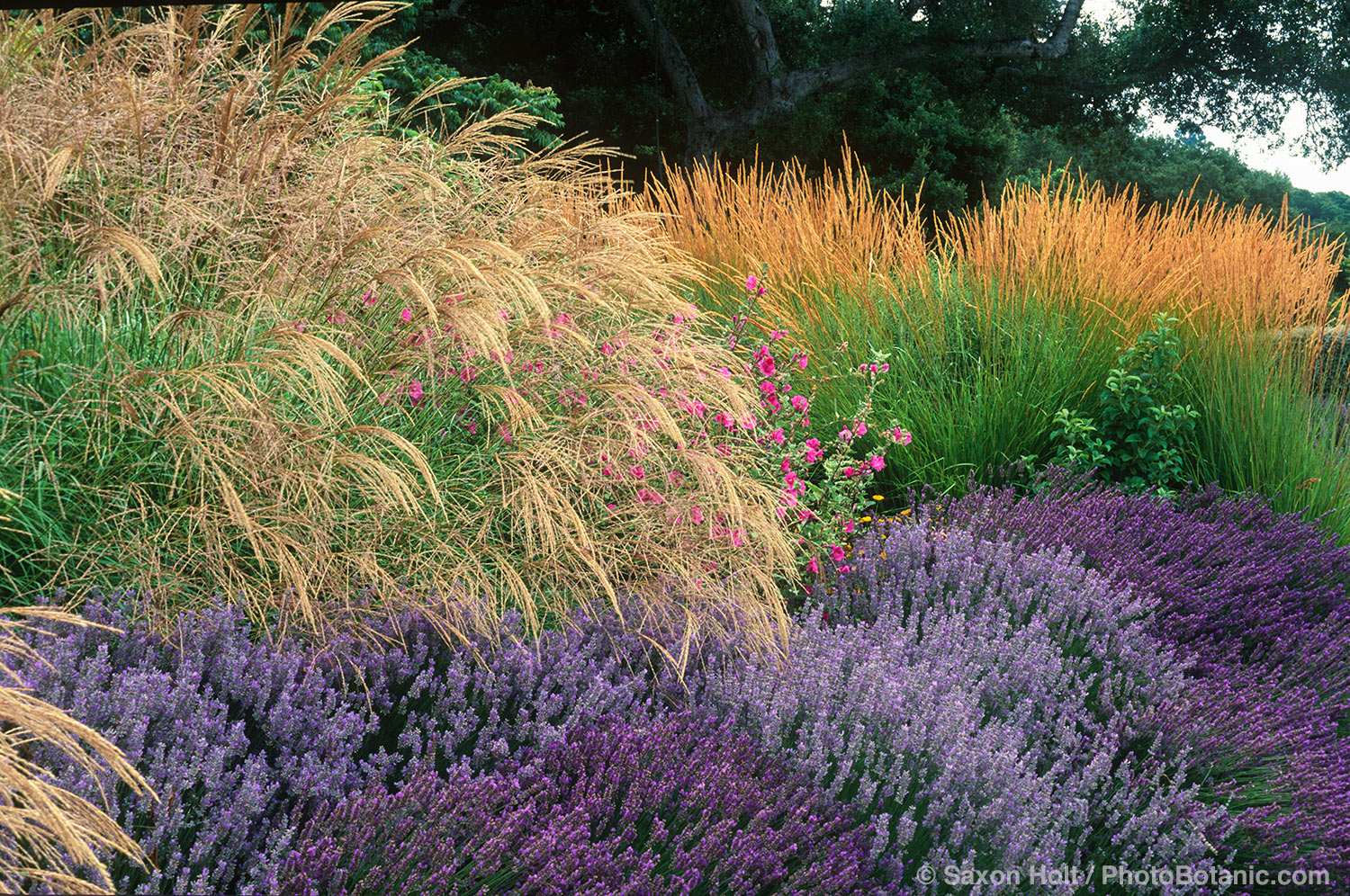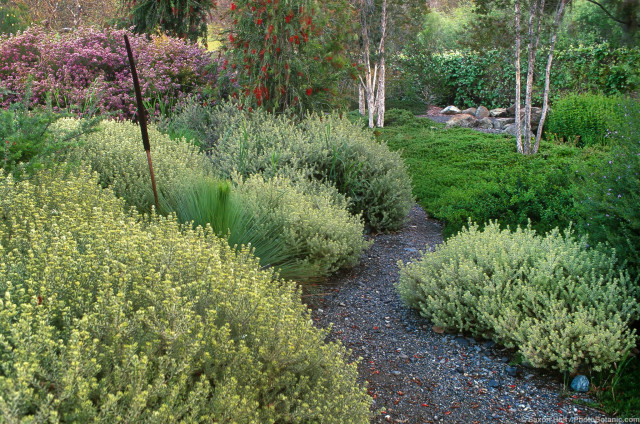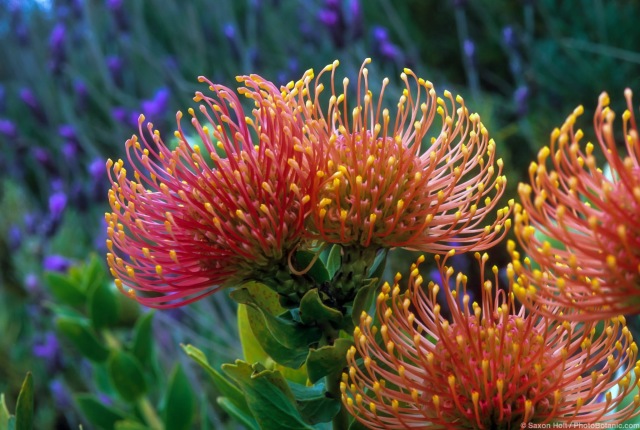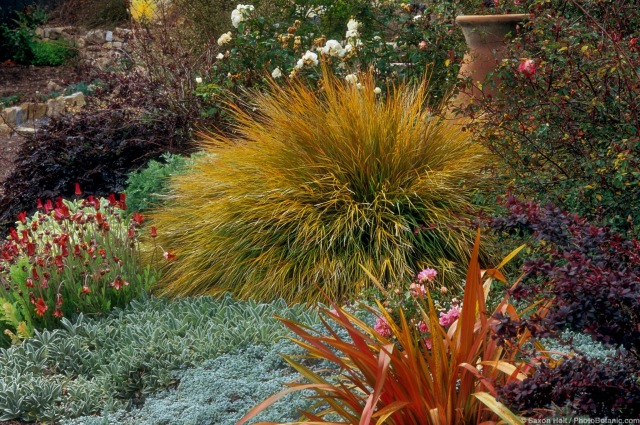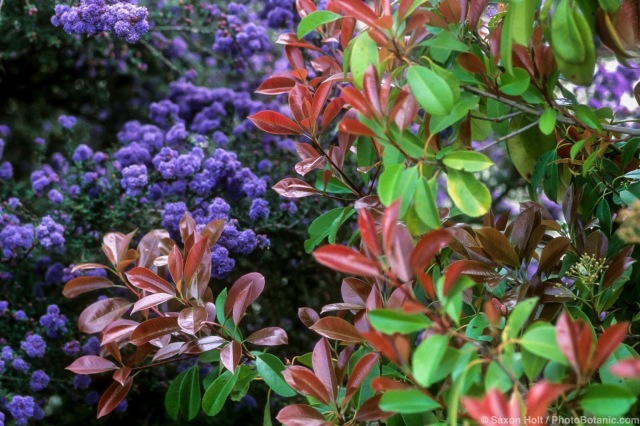I live in California. In summer I can plan a camping trip and never worry about rain. I don’t worry about my roses getting beat up in a storm and veggies love all day sun.
But I need to irrigate all summer; and so does every farm and every garden – all summer. It doesn’t rain. The irrigation water has to come from somewhere, other than the hose bibb.
We hope for wet winters to recharge the groundwater and to dump snow in the Sierras, storing water that will fill lakes and reservoirs and keep the rivers flowing. Unfortunately we are in a particularly dry pattern, now in the third year of well below average winter rain. Water is being rationed.
So its use and allocation is hot political issue, and not just in California, but throughout the world. It is increasingly important everywhere to use water wisely and efficiently. For gardeners that means the right plant in the right place.
Here gardeners need to embrace the summer-dry climate and use plants that are adapted to it. This does not mean drought tolerant plants, it means climate adapted and sustainable. We don’t need plants that are simply tolerant of no summer water, we need plants that expect no summer water. That’s not drought tolerant, that’s normal.
The best garden plants are those that will accept some summer water to be a bit more fulsome and blend into an aesthetic that finds beauty in summer-dry.
As a garden photographer I have spent many years learning to appreciate our summer-dry climate and looking for gardens to illustrate the best garden practices. I really want to help other gardeners have success and I have launched a new website to promote the summer-dry garden – summer-dry.com.
All photos on the site are taken from Plants and Landscapes for Summer-Dry Climates the book I photographed for East Bay Municipal Utility District.
Many have called our climate a Mediterranean climate and for many years we accepted that description almost as an honor. Many of the best performing plants we could find in nurseries came from the Mediterranean region such as aromatic herbs – lavender, rosemary, thyme; or tough perennials such as Erysimum, Euphorbia, Helianthemum; or trees and shrubs like Cistus, Oleander, olive, Italian cypress. All useful plants but yawn, there is much more.
Not only have California gardeners really embraced our own natives as garden plants, there are three other major summer-dry regions of the world: South Africa, central Chile, and Southwest Australia all have flora readily adapted to other summer-dry climates. Let’s not call all five summer-dry regions of this big world Mediterranean simply because it was the first to develop a strong aesthetic.
As gardeners, plant explorers, and nurseries become more sophisticated and knowledge about a broad range of plants from diverse regions, new aesthetics will emerge. I think summer-dry is a better term.
It is an exciting time to be a summer-dry gardener. There are so many new plants to be used in untried combinations, so much to learn as we experiment with differing soil structures and temperature ranges, not yet knowing what plants will work with others in the many microclimates of a summer-dry region. You should enjoy your flowers as much as you can. So, every sunny day, put your sunblock and Custom Sunglasses on and go out an enjoy the garden you have created.
I hope to expand the existing photo database of plants in garden settings on the summer-dry.com site. An ultimate target would be all plants available in the nursery trade in California. I will be seeking out those adventurous gardeners who are experimenting and reporting with photos.
Now let’s hope for some decent rains. A summer-dry climate is supposed to be winter wet. Bring on some winter weather !



